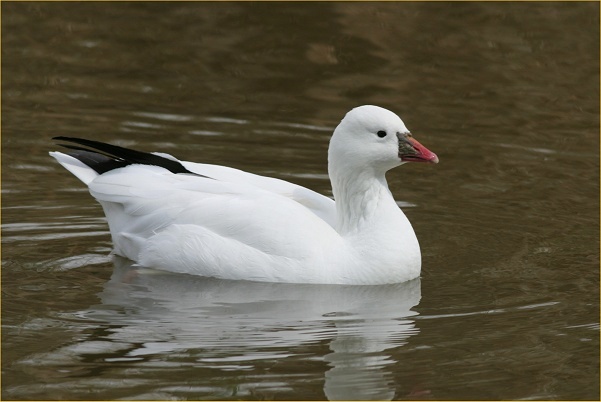
Date: 2005-03-06
Lens: Canon 400mm F5.6

 Ross's Goose
Chen rossii
Ross's Goose
Chen rossii
 Description
Description
The current estimated population of the Ross's Goose is 80,000, the majority of which winter in California's Sacramento Valley. Before the 1950s, the Ross's Goose had well-defined breeding and wintering areas with few strays. Since then, the species has expanded eastward, both on the breeding and wintering grounds. The change in breeding distribution has resulted in more contact and subsequent hybridization with the Snow Goose. This hybridization is thought to be the cause of the rare blue morph Ross's Goose.
This bird feeds entirely on vegetation, such as grass and domestic grains.
General: 24 inches in length. Sexes similar.
Adult: Entirely white plumage. Short, pink bill. Pink legs and feet. Black primaries. Rounded head.
Immature: Mostly whitish plumage. Pale-gray upperparts. Short, dark bill. Dark legs and feet. Black primaries. Rounded head.
Blue Morph Adult: White head and upper neck. Dark lower neck and body. Pale gray upperwing coverts. Mostly dark primaries and secondaries. Short, pink bill. Pink legs and feet. Rounded head.
Winters on salt or freshwater marshes, freshwater lakes, and farms. Breeds on Arctic tundra.
 Nesting
Nesting4-5 creamy white eggs. The eggs have a 21-24 day incubation period. Fledging occurs in 40-45 days. The nest is made from grass and lined with down and is built on a small island in a lake or river. Nests in loose colonies. The female incubates the eggs, while the male stands guard nearby. The chicks down may be either yellow or gray.